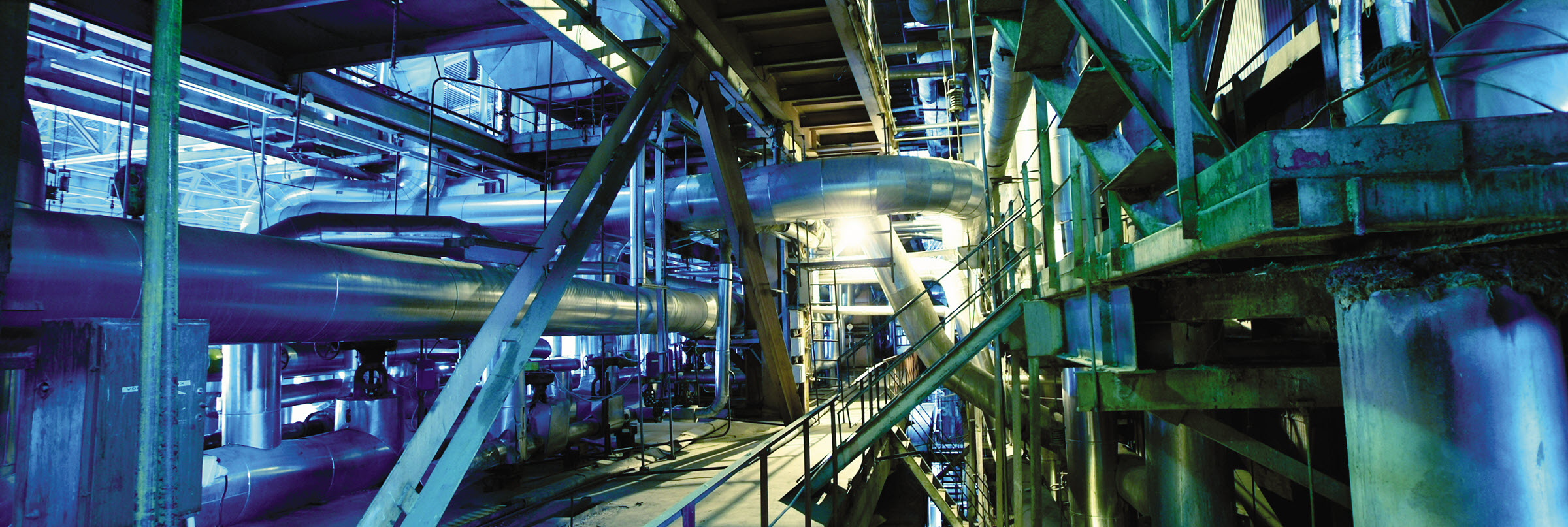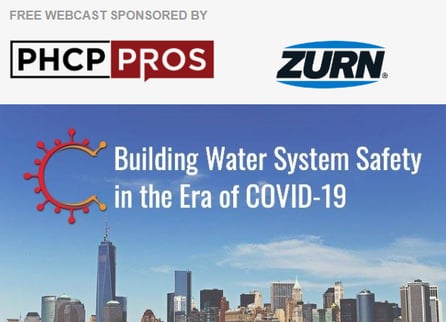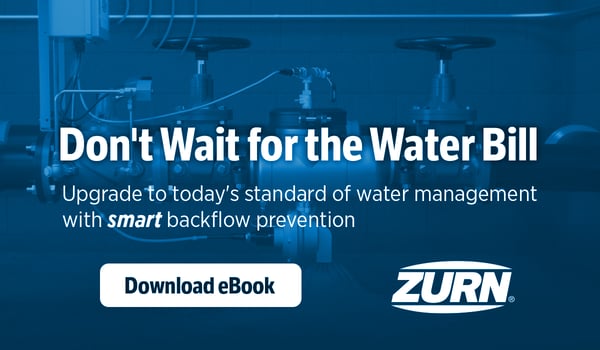
COVID-19 stay-at-home orders emptied many commercial buildings across the nation. Once bustling gyms, offices, dormitories, and other public spaces remain on pause. This is problematic for water safety. When water sits still, it can accumulate water contaminants, including lead, copper, and harmful organisms.

We partnered with PHCPros and Purdue University to put on the free webinar, Building Water System Safety in the Era of COVID-19, that address these issues.
Over the course of an hour, we covered actions building owners can take to maintain or improve water quality, as well as the role professional plumbers, contractors, and facilities managers have in implementing these plans. The Purdue experts outlined examples of water maintenance plans and water safety guidelines for reopening buildings. Zurn product experts also weighed in on a number of questions after the webinar.
Below we recapped the leading Q&As. To hear the rest, download the on-demand webinar from PHCPros or contact our Zurn product experts directly (contact information is located at the bottom of this post).
Q: How long does flushing a building take?
It really depends on the building and devices inside. Water pressure either generates inside the building with pumps or is delivered to the building. So, for instance, if you open too many faucets in the building, there is an unlimited pressure and you won't have any water flowing out of these certain faucets. You have to be very deliberate in your approach to flushing. It will depend on the amount of water that's in the building and the speed at which that water can come out of the faucets.
Q: When is the best time to implement this process - before workers go back to the office or after they return?
When you're flushing out the water system, it's a little bit easier to do before there are people in the building. This is especially true if you're implementing something like disinfection where there's going to be something toxic contaminants in the water.
It's a great idea to do these sort of flushing activities and anything more extreme before people go back to work. But we must keep in mind that people are not coming back to work all at once. Therefore, maintenance plans may include staggered steps. You may repeat actions for several months after people come back to work.
Q: Is there any product maintenance that Zurn would recommend before occupying a building?
It’s a great time to look back at the pressure of the building. With stagnant water, you get more debris and sediment in the water and that tends to impair all the different plumbing valves, especially where you have steel on rubber elements.
Make sure to check on your pressure reducing valves and your backflow preventors. Also, if you're doing a flushing protocol, it's a good time to consider cleaning out the strainer screen. Strainers are typically put in the plumbing system ahead of important equipment that is subject to fouling with debris. So, this is a good time to flush out your strainer screens as well.
Q: Is there evidence that COVID-19 survives in a drinking water system?
There's been a lot of research on this, but there is no evidence that COVID-19 survives in the drinking water system. Legionella can exist, which is cause for concern. People who have COVID-19 could be more susceptible to Legionella infections, but there's no evidence that COVID-19 actually goes through the water system.
Q: Workers in my building are more concerned with not spreading germs when they return to work. Beyond flushing the system to make sure the water quality is safe, what else can building owners do to put their workers at ease?
We’re seeing a dramatic shift to hands-free environments in the workplace. There’s a huge spike in demand for hands-free, hygienic product. Some businesses are completely retrofitting their restrooms to sensor faucets or sensor flush valves, soap dispensers, and even hand dryers with HEPA filters, which filter the bacteria out of the air prior. All of these can help minimize the transference of germs to surfaces in your commercial building.
The Purdue team recommended minimizing any aerosolizing of bacteria from the water system. You can limit use or clean out your shower valves and change or clean out your flow controls or aerators in your system, turning them over to laminar.
Q: Is there a way to automate system flushing on a regularly timed schedule?
Plumbing system monitoring and flushing continues to be a hot topic. New products are evolving and solving challenges.
First and foremost, we recommend following the CDC guidelines for creating an all-encompassing water management plan for your building. This will ensure that there aren’t any parts of your building or your plumbing system that you miss. Additionally, this can help you understand what treatments are effective for all areas of the system, whether it be a physical flushing, a thermal treatment, chemical, etc.
We offer connected solutions to help monitor various aspects of your plumbing system—starting with your incoming backflow preventer all the way through your point-of-use fixtures in a commercial bathroom. plumbSMART delivers these product insights in real time.
Here are a few proactive ways to battle stagnation. You can set your sensor faucet to turn on once a day to purge the lines. You can also monitor your usage, set up custom alerts for high or low usage and track trends through the plumbSMART app. These insights will give you more accuracy and control over your water management plan and building maintenance plan.
Q: If these contaminants can be spread from the water to the air where there's splashing, what would be the best types of faucets to cut down on that?
There's a couple of things to do. Any type of faucet with laminar flow control at the point of use would help induce air into the water stream.
You could also reduce your building water pressure a little bit or turn down the stops a little bit as your point of use faucet. That would help reduce the force of the water coming out of your faucet into the sink and minimize splashing.
For more information on how to safely open your building, contact the Zurn product experts featured on this webinar:

John Mankins |

Daniel Danowski |






